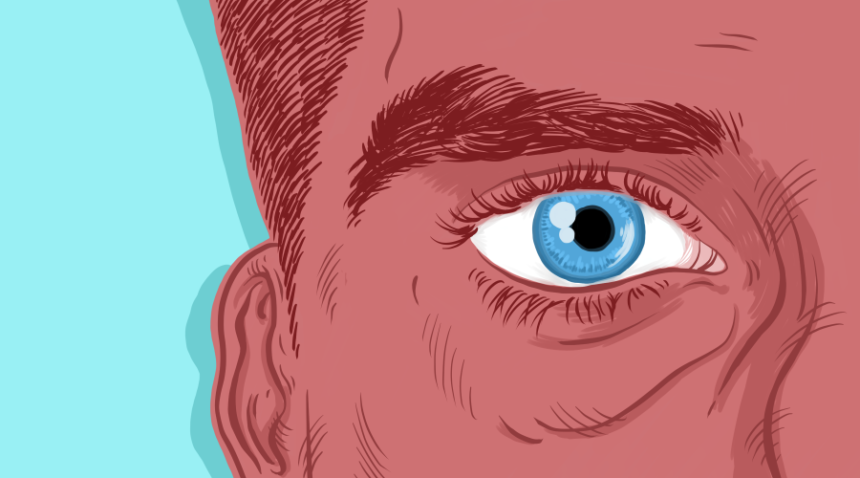Eye exams are an important part of staying healthy that goes beyond just making sure your vision isn’t blurry. Eye exams also check for signs of eye disease and can identify problems before your sight is compromised.
We’ve answered some common questions about eye exams with the help of UNC Health optometrist Michael Thomas Mendsen, OD.
When should children get eye exams?
Every child should have at least one eye exam between birth to age 2, again between ages 3 and 5 and then right before starting school. A pediatrician can do these exams.
“The pediatricians are good at spotting problems and sending those patients our way,” Dr. Mendsen says. “Based on what we see in their first exam with us, we’ll schedule follow-ups if needed.”
If your child does not have vision problems growing up (which your pediatrician will check for during annual checkups), there is no need for additional eye exams until adulthood.
When should adults get eye exams?
People ages 18 and older should have their eyes checked every two years by an eye doctor, Dr. Mendsen says. “If you come to that eye exam and we find a problem or you start wearing glasses or contact lenses, yearly appointments are needed,” Dr. Mendsen says.
At age 40, you need to have a baseline eye exam, as this is when early signs of disease or changes in vision may appear. “Most of us begin to have vision changes around this time,” Dr. Mendsen says. “If you do, your doctor will prescribe a follow-up plan for you.”
Beginning at age 65, you need to have an annual eye exam regardless of whether you’ve had eye problems in the past because problems with your vision at this age can signal serious health problems such as diabetes, high blood pressure, high cholesterol and even cancer.
What happens during an eye exam?
No matter your age, most eye exams are largely the same. You’ll give your medical history, and then a nurse or eye technician will perform some basic pre-testing that includes checking to see that your pupils respond to light, making sure that your eyes are aligned properly and testing your peripheral vision.
After that, you will read an eye chart to determine how well you see at various distances. Having 20/20 vision does not mean you have “perfect” vision; it means that you have normal vision. At 20 feet, you can see objects clearly. If you have 20/40 vision, you see at 20 feet what people with normal vision see at 40 feet.
“Then we will go into the medical portion of the exam, where we’ll take a look at the health of the eye, check the eye pressure, and do a dilated exam to look at the back of the eye,” Dr. Mendsen says.
What does it mean to be nearsighted or farsighted?
Nearsightedness, or myopia, affects more than 40 percent of the population in the United States. It means that you can see objects close to you, but objects further away are blurry or unable to be detected at all.
Farsightedness, or hyperopia, is when you can see objects far away but not those right in front of your face. If the farsightedness is minimal, no visual symptoms will occur. If larger amounts of farsightedness are present, eyestrain, blurry vision and headaches often occur with prolonged periods of near work such as reading a book or using a computer or tablet.
Farsightedness is distinct from presbyopia, which is also marked by difficulty seeing things close up. Farsightedness is caused by eye shape and can happen at any age, whereas presbyopia is aging-related. It’s a gradual loss in your eyes’ ability to focus on nearby objects and usually starts around age 40.
“That’s when many adults start to need reading glasses,” Dr. Mendsen says.
What does astigmatism mean?
Astigmatism appears when your eye does not focus light evenly on the retina, the layer of nerve cells lining the back wall inside your eye. This results in distorted or blurred vision at any distance.
“Astigmatism occurs when the shape of the front surface of the eye is shaped more like a football than a soccer ball, so it requires a different type of lens to correct the eye,” Dr. Mendsen says. Just like myopia and hyperopia, astigmatism is correctable with both glasses and contact lenses.
What is a cataract?
A cataract is the clouding of your eye’s natural lens that begins to occur in your mid-to-late 60s. You are born with a clear lens that allows you to shift the focus of your eye. Over time, that lens becomes cloudy.
“If we deem that it is reducing vision to a certain degree, we recommend a cataract surgery that removes the cloudy lens and we put in a clear implant instead,” says Dr. Mendsen.
The implantable lens is able to change the prescription of the eye and oftentimes patients only require reading glasses following the procedure.
What are the next steps if an exam shows that your vision is impaired?
If your vision is reduced compared to that 20/20 standard, your eye doctor will explore ways to correct it with glasses or contacts.
“We’ll prescribe the glasses or the contact lenses for you that day, and depending on how well you do with it, we’ll typically follow up within a year,” Dr. Mendsen says. “If the vision is impaired due to a medical condition, such as cataracts, macular degeneration, glaucoma, etc., we would either send you to a specialist to deal with that or prescribe some sort of treatment.”
These treatments could include medication, taking vitamins or receiving an injection, depending on the cause of vision impairment.
If you need your eyes checked, talk to your doctor or find one near you.

